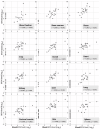Beak and feather disease virus (BFDV) persists in tissues of asymptomatic wild Crimson Rosellas
- PMID: 39289466
- PMCID: PMC11408594
- DOI: 10.1038/s42003-024-06652-1
Beak and feather disease virus (BFDV) persists in tissues of asymptomatic wild Crimson Rosellas
Abstract
Infectious diseases can drive populations and species to extinction. Beak and feather disease virus (BFDV) is a circovirus of global conservation concern that can infect all Psittaciformes and some other species. Yet some parrot species, such as Crimson rosellas (Platycercus elegans), can live successfully with high BFDV prevalence (>40%) with no clinical signs reported in infected individuals. We assessed BFDV load in 10-12 tissues per bird, from n = 66 P. elegans, to reveal tissue tropism and BFDV persistence in tissues. Here we show that in 94% of individuals, BFDV was detected in one or more tissues. While BFDV replicated to high levels in subadults, in adults (some confirmed seropositive) the virus persisted in various tissues at much lower levels. Our findings reveal that BFDV is much more common in wild P. elegans than previously thought and suggest that current screening practices (mostly on blood) may substantially underestimate BFDV infection estimates, with implications for biosecurity and conservation programs globally.
© 2024. The Author(s).
Conflict of interest statement
The authors declare no competing interests.
Figures


References
-
- Smith, K. F., Acevedo-Whitehouse, K. & Pedersen, A. B. The role of infectious diseases in biological conservation. Anim. Conserv.12, 1–12 (2009).
-
- de Castro, F. & Bolker, B. Mechanisms of disease-induced extinction. Ecol. Lett.8, 117–126 (2005).
-
- Scheele, B. C. et al. Amphibian fungal panzootic causes catastrophic and ongoing loss of biodiversity. Science363, 1459–1463 (2019). - PubMed
-
- Atkinson, C. T. & LaPointe, D. A. Introduced avian diseases, climate change, and the future of Hawaiian honeycreepers. J. Avian Med. Surg.23, 53–63 (2009). - PubMed
-
- Samuel, M. D., Woodworth, B. L., Atkinson, C. T., Hart, P. J. & LaPointe, D. A. The epidemiology of avian pox and interaction with avian malaria in Hawaiian forest birds. Ecol. Monogr.88, 621–637 (2018).
Publication types
MeSH terms
LinkOut - more resources
Full Text Sources

